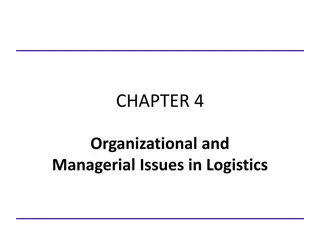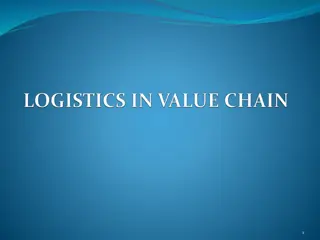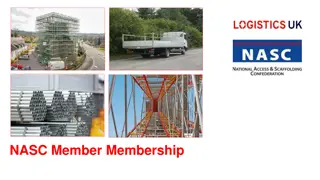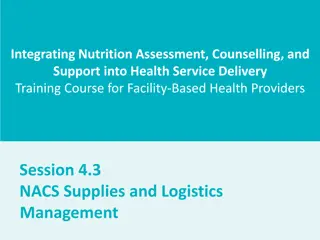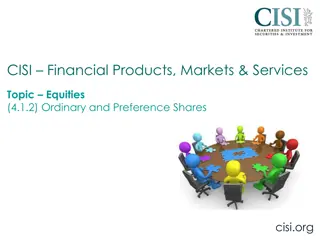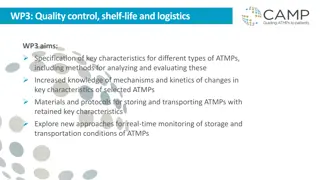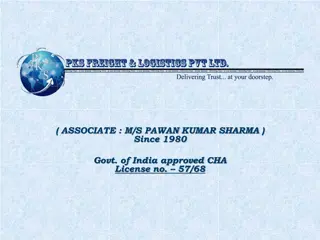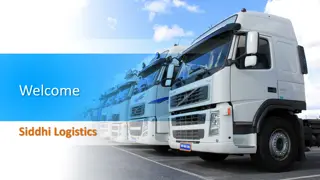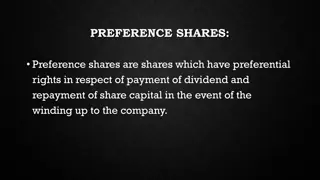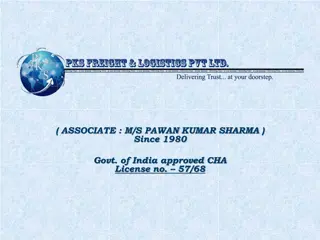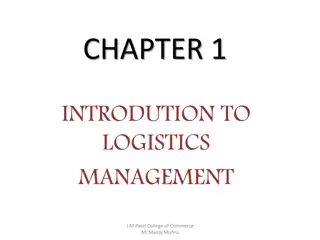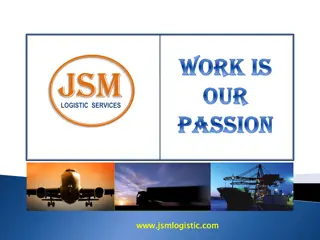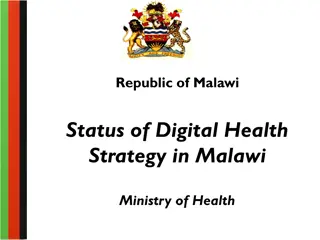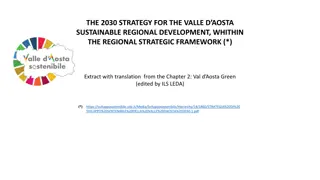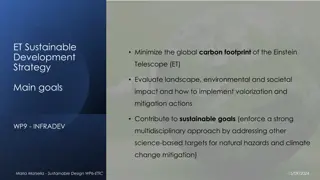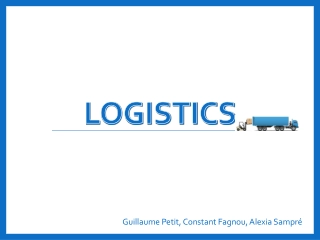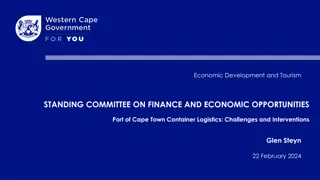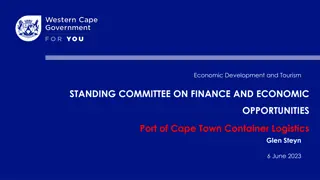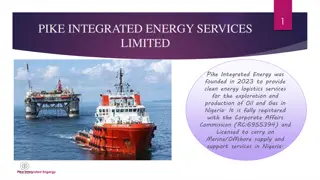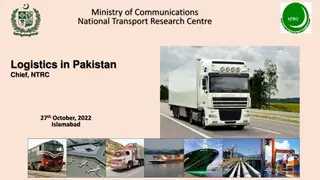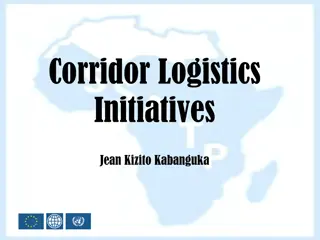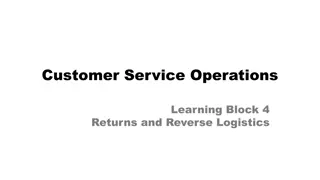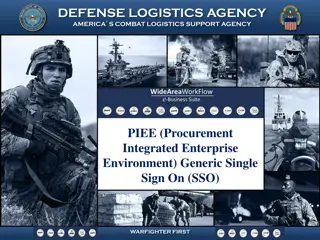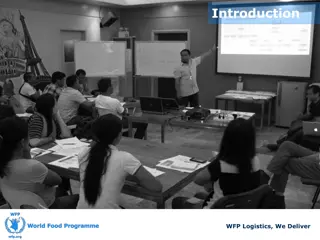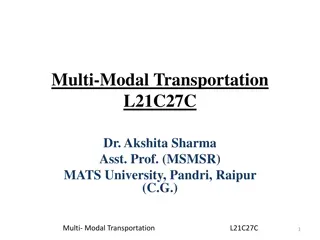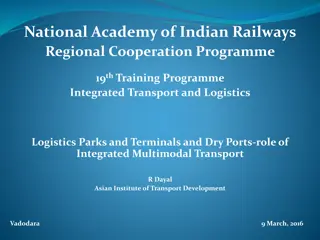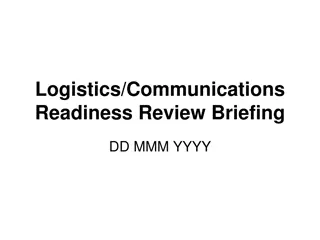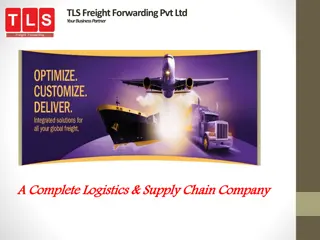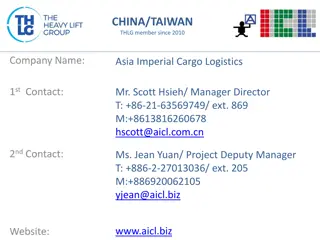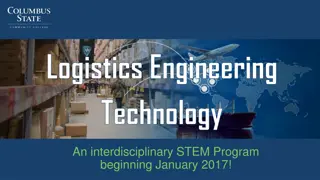
Neal Elbaum Shares How to Develop a Sustainable Logistics Strategy
As businesses increasingly shift their focus toward sustainability, logistics plays a vital role in minimizing environmental impact while ensuring efficiency. Neal Elbaum, an expert in logistics management, provides insight into how companies can dev
Download Presentation

Please find below an Image/Link to download the presentation.
The content on the website is provided AS IS for your information and personal use only. It may not be sold, licensed, or shared on other websites without obtaining consent from the author. Download presentation by click this link. If you encounter any issues during the download, it is possible that the publisher has removed the file from their server.
E N D
Presentation Transcript
Neal Elbaum Shares How to Develop a Sustainable Logistics Strategy As businesses increasingly shift their focus toward sustainability, logistics plays a vital role in minimizing environmental impact while ensuring efficiency. Neal Elbaum, an expert in logistics management, provides insight into how companies can develop a sustainable logistics strategy. This guide will break down key aspects of building a green, efficient, and future-proof logistics framework. 1. Understanding the Importance of Sustainable Logistics Sustainable logistics is more than just reducing carbon emissions it s about building a responsible, eco-friendly supply chain that benefits both the environment and business operations. This approach prioritizes resource conservation, waste reduction, and energy efficiency across the entire supply chain, from procurement to last-mile delivery. Businesses that adopt sustainable logistics practices often gain several benefits, such as: Reduced operational costs through efficient resource use Enhanced brand reputation as an environmentally conscious company Compliance with environmental regulations A competitive edge in industries where customers demand sustainability 2. Assessing and Optimizing Your Current Logistics Operations The first step in creating a sustainable logistics strategy is conducting a thorough assessment of your current logistics operations. Neal Elbaum emphasizes the importance of analyzing each aspect of the supply chain to identify inefficiencies and opportunities for improvement. Key areas to assess include: Transportation: Evaluate fuel efficiency, routing, and vehicle utilization. Warehousing: Look into energy use, material handling, and facility layouts. Packaging: Consider using recyclable or biodegradable packaging materials to reduce waste. Once you have a clear understanding of where improvements can be made, optimize your processes by integrating technologies that track emissions, reduce fuel consumption, and streamline operations.
3. Leveraging Technology for Sustainable Solutions Neal Elbaum believes that technology is crucial for driving sustainability in logistics. Advances in data analytics, artificial intelligence (AI), and Internet of Things (IoT) are enabling companies to make smarter, greener decisions in real-time. Some ways technology supports sustainable logistics include: Route Optimization Software: Reduces fuel consumption by calculating the most efficient delivery routes. Electric Vehicles (EVs): Replacing traditional diesel trucks with EVs helps minimize greenhouse gas emissions. Smart Warehousing Solutions: Automated systems that control lighting, temperature, and energy use reduce the carbon footprint of logistics facilities. By implementing these technologies, companies can reduce their environmental impact while also achieving cost savings and improving overall logistics performance. 4. Collaborating with Eco-Friendly Partners A sustainable logistics strategy requires collaboration with suppliers, manufacturers, and carriers who share the same sustainability goals. Neal Elbaum advises businesses to evaluate their partnerships based on their environmental policies and performance. Key considerations when choosing eco-friendly partners: Do they use renewable energy sources or energy-efficient processes? Are their vehicles compliant with emission standards? Do they offer sustainable packaging and recycling programs? Forming partnerships with organizations that prioritize sustainability can create a ripple effect throughout the supply chain, enhancing both environmental responsibility and business efficiency. 5. Implementing Continuous Improvement and Monitoring Sustainability is an ongoing journey, not a one-time initiative. Neal Elbaum stresses the need for continuous monitoring and improvement to ensure that logistics strategies remain effective and adaptable in the face of evolving environmental challenges. Businesses should regularly review key performance indicators (KPIs) related to sustainability, such as: Carbon emissions per delivery or unit shipped
Energy consumption in warehouses Waste generated from packaging and distribution By tracking these metrics, companies can identify areas for improvement, make data-driven decisions, and stay ahead of industry trends. Regular training and awareness programs for staff can also reinforce a culture of sustainability within the organization. Conclusion Neal Elbaum s approach to sustainable logistics emphasizes the importance of innovation, collaboration, and continuous improvement. By assessing current operations, leveraging technology, collaborating with eco-friendly partners, and maintaining an ongoing focus on sustainability, businesses can build logistics strategies that are not only environmentally responsible but also enhance long-term operational efficiency and profitability.


